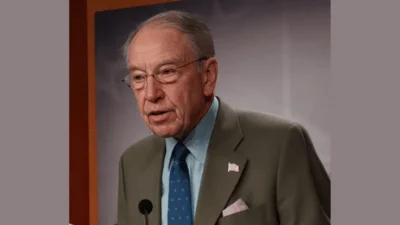The Congressional Record is a unique source of public documentation. It started in 1873, documenting nearly all the major and minor policies being discussed and debated.
“LEGISLATION TO MODIFY THE LaFARGE PROJECT” mentioning the U.S. Dept. of Transportation was published in the Extensions of Remarks section on pages E33 on Jan. 5, 1995.
The publication is reproduced in full below:
LEGISLATION TO MODIFY THE LaFARGE PROJECT
______
HON. STEVE GUNDERSON
of wisconsin
in the house of representatives
Wednesday, January 4, 1995
Mr. GUNDERSON. Mr. Speaker, today I am reintroducing with Representative Petri, a measure which would direct the Secretary of the Army to transfer to the State of Wisconsin lands and improvements associated with the LaFarge Dam and Lake project--a Corps of Engineers flood control project initiated in 1962. This legislation would deauthorize the construction of the reservoir and dam, while completing other features of the original project.
On October 3, 1994, the House of Representatives passed the Water Resources and Development Act by a voice vote. This measure incorporated provisions in H.R. 4575 which modified the original LaFarge Dam project and provided the opportunity to lay to rest economic stagnation which has plagued this area for 30 years. Unfortunately, during the closing days of the congressional session the other body did not consider the legislation, thus the measure died when Congress adjourned.
Prior to 1962, the LaFarge area, nestled in the Kickapoo Valley of Wisconsin, was a farm community which suffered from severe flooding each spring. Responding to residents' complaints, the Federal Government promised to correct the flooding problem by constructing a reservoir and dam. For environmental reasons, work was suspended in July
1975, leaving 61 percent of the dam unfinished, while 80 percent of the land was acquired. By 1990, it was estimated that annual losses resulting from the removal of family farms and the unrealized tourism benefits anticipated with the completion of the project totaled over 300 jobs and $8 million for the local economy, further exacerbating poverty in the area.
Recognizing the tragic circumstances in which several generations of families in the area had found themselves, in 1991 Governor Thompson, State Senator Rude, State Representative Johnsrud, and I urged the residents in the Kickapoo Valley to form a Citizens Advisory Committee to initiate a plan for a positive resolution. Governor Thompson appointed Alan Anderson of the University of Wisconsin-Extension as coordinator for the Kickapoo Valley Advisory Committee. The Wisconsin Department of Natural Resources, Department of Transportation, and the State Historical Society provided professional assistance in the spirit of true cooperation. Over a span of 2 years the committee forged a consensus and recommended the establishment of the Kickapoo Valley Reserve.
In the spring of 1994, the State of Wisconsin concurred in its recommendation and the legislature created the Kickapoo Valley Reserve and Governing Board. Having established this entity, the State of Wisconsin is prepared to receive the transfer of land from the Federal Government, pending action by the Congress.
This legislation, which transfers lands associated with the project to the State of Wisconsin, formally terminates, or ``de-authorizes'' the construction of the lake and dam portions of the original authorization. The modification will authorize the $17 million necessary to require the corps to complete two central parts of the original project: finishing the relocation of State Highway 131 and county Highway Routes ``P'' and ``F'', along with the construction of a visitor and education complex, recreational trails, and canoe facilities.
If the original project were to be completed today, the Corps of Engineers estimates the cost would be $102 million. Since the original authorization of the project in 1962, the corps has expended $18 million. Under the legislation introduced today, the Federal responsibility to conclude the original activities would be for $17 million, creating a savings of $66 million to Federal taxpayers.
With the reintroduction of this legislation we bring renewed hope to the people that Government can right a wrong. Thus, I urge my colleagues to pass this legislation. By doing so, we will have seized on a golden opportunity to make a profound difference in the lives of those in the Kickapoo Valley, while sustaining the region's rich environmental surroundings for generations to come.
____________________








